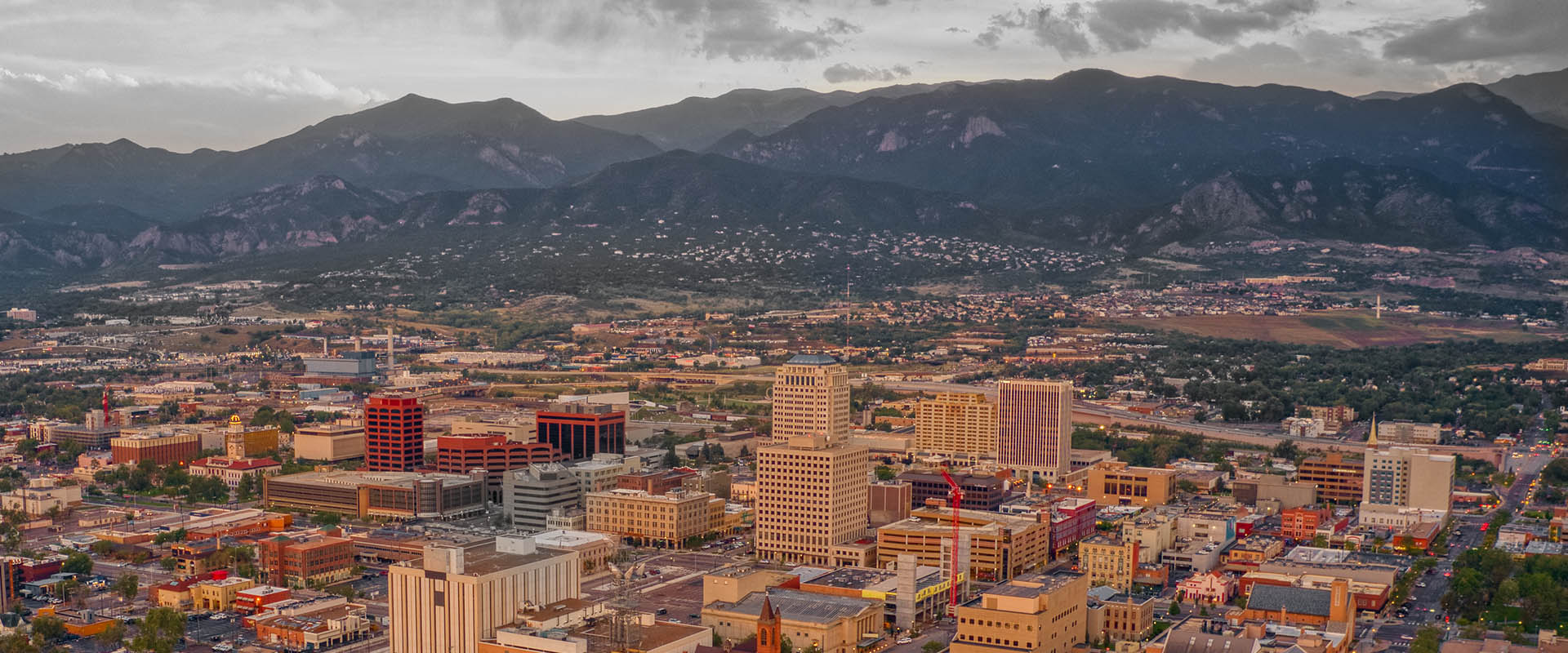Pedestrian safety is an important issue in Colorado. Knowing your rights and responsibilities as a pedestrian can make a big difference in staying safe on the streets and sidewalks. In Colorado, laws are in place to help keep pedestrians safe, but it is also important to understand how these laws work to avoid accidents and prevent confusion. This guide is written to help you understand the main pedestrian laws in Colorado, your rights as a pedestrian, and the responsibilities you have when walking near or across roads.


With You Every Step of the Journey
When you need legal help, Mark Hanchey and Ben Peterson are here to guide you through it all. One step at a time. Reach out today for legal support. Get The Law Firm of Mark S. Hanchey and Ben Peterson fighting for you
Free Consultation Download PDFThe Basics of Colorado Pedestrian Laws
Colorado pedestrian laws focus on safety, giving both pedestrians and drivers guidelines to follow when sharing the road. Pedestrian laws cover actions like crossing at crosswalks, walking on sidewalks, and yielding to vehicles in certain situations. These laws make it clear that pedestrians have the right to walk on public sidewalks, crosswalks, and pathways, but also must obey traffic signals and signs. When both pedestrians and drivers follow the rules, it reduces the risk of accidents and helps everyone stay safe.
One key part of Colorado law states that drivers must yield to pedestrians in crosswalks. This means if a pedestrian is crossing at a marked crosswalk or at an intersection where there is no signal, drivers must stop and let the pedestrian cross. However, it is also the responsibility of the pedestrian to wait for a safe moment to step into the street, making sure it is safe before crossing.
Crosswalk Rules and Where to Walk Safely
Colorado has specific rules about where pedestrians can cross streets safely. Crosswalks are marked areas that show where it is safe to cross, and they are often located at intersections. Pedestrians are expected to use crosswalks whenever possible. When a crosswalk is present, it gives pedestrians the right of way, and drivers must stop to allow pedestrians to cross. However, if a pedestrian steps into the crosswalk suddenly and gives the driver no time to stop, the pedestrian may be at fault if an accident happens.
In situations where there is no crosswalk, Colorado law allows pedestrians to cross the street, but they must yield the right of way to vehicles. This means that if a pedestrian decides to cross in an area without a crosswalk, they must be extra careful and allow cars to pass before crossing. By following these rules, pedestrians can stay safe even in areas without crosswalks.
Traffic Signals and Pedestrian Responsibilities
Traffic signals play an important role in pedestrian safety. In Colorado, pedestrians must obey all traffic signals, including “Walk” and “Don’t Walk” signs. If a pedestrian crosses the street while the signal says “Don’t Walk,” they are breaking the law, which could lead to serious consequences if an accident occurs. Pedestrians should wait for the “Walk” signal before stepping into the street. At intersections without pedestrian signals, pedestrians must still follow the traffic lights for cars. When the light turns green for cars moving in the same direction, pedestrians can cross, but they must be cautious of turning vehicles.
Pedestrians should also avoid crossing the street in the middle of a block unless there is a designated crosswalk. In many places, crossing mid-block, also known as jaywalking, is against the law. Jaywalking not only breaks the law but can also increase the risk of accidents. By following traffic signals and avoiding jaywalking, pedestrians help make the roads safer for everyone.
The Duty of Care for Drivers and Pedestrians
Colorado law emphasizes that both drivers and pedestrians share a “duty of care” when using the roads. This means that both parties must act responsibly to avoid causing harm to others. For drivers, this means staying alert for pedestrians, especially in areas with heavy foot traffic. Drivers should slow down when approaching crosswalks or intersections and watch for any pedestrians crossing the street. They must also be aware of school zones, residential neighborhoods, and areas with a high number of pedestrians.
For pedestrians, the duty of care means staying aware of nearby vehicles and being cautious when crossing streets. Pedestrians should make eye contact with drivers before crossing and avoid walking in areas where cars cannot see them easily. Acting responsibly and being mindful of each other helps both drivers and pedestrians avoid dangerous situations.
Understanding Right of Way in School Zones and Residential Areas
In school zones and residential neighborhoods, pedestrians have greater protection under Colorado law. School zones are areas near schools where speed limits are lowered to protect children walking to and from school. Drivers are required to slow down and watch for any children crossing the street. Pedestrians, especially young children, are encouraged to use crosswalks and follow crossing guards’ instructions to stay safe. Parents should teach their children about pedestrian safety and remind them to look both ways before crossing the street.
In residential areas, pedestrians often share the streets with cars because there may not be sidewalks. When walking in these areas, pedestrians should stay as far to the side of the road as possible, facing oncoming traffic. This way, both drivers and pedestrians can see each other more clearly, reducing the risk of accidents.
Special Rules for Pedestrians With Disabilities
Colorado law also considers the needs of pedestrians with disabilities. People using wheelchairs, crutches, or other mobility aids have the right to use sidewalks and crosswalks just like any other pedestrian. Drivers must be extra cautious and allow enough time for individuals with disabilities to cross the street. Pedestrians who are visually impaired, especially those using white canes or guide dogs, are given special protections. Drivers should be aware of these individuals and provide them with plenty of space to cross safely.
When using sidewalks and crosswalks, pedestrians with disabilities should try to stay within marked pathways to keep themselves safe and visible to drivers. Following these guidelines helps ensure that everyone, regardless of ability, can travel safely.
Staying Safe as a Pedestrian: Tips and Best Practices
Pedestrians can take several steps to improve their safety on the road. Wearing bright or reflective clothing, especially at night, helps drivers see pedestrians more easily. Pedestrians should avoid using headphones or looking at their phones while walking near traffic. Staying focused and aware of the surroundings allows pedestrians to react more quickly if a car is nearby.
It is also wise to make eye contact with drivers before crossing, even if you have the right of way. This simple action lets you know that the driver sees you and is prepared to stop. In poor weather conditions, such as rain or snow, it is especially important to be cautious since slippery roads make it harder for cars to stop.
How Pedestrians Can Report Violations and Accidents
In Colorado, if a pedestrian is involved in an accident or witnesses a traffic violation, they have the right to report it to local law enforcement. If a driver fails to yield or breaks another law that endangers pedestrians, reporting it can help prevent similar incidents in the future. When reporting an accident, it is essential to provide details about the location, time, and any information about the driver or vehicle involved.
For pedestrians injured in an accident, seeking medical help right away is the top priority. Documenting the accident details and speaking to a legal professional can also be beneficial if there are questions about fault or if compensation is needed. Legal support is especially helpful in cases where the accident led to serious injuries or when there is uncertainty about who was responsible.
Legal Help for Pedestrian Accidents: Understanding Your Options
When a pedestrian is injured in a traffic accident, they may face medical bills, missed work, and other challenges. Colorado law allows injured pedestrians to seek compensation if the accident was caused by a negligent driver. Negligence refers to actions that fail to meet the standards of care expected of a responsible person. In these cases, the pedestrian can file a claim or lawsuit to recover damages for medical expenses, lost income, and pain and suffering.
Hiring a lawyer can be beneficial if you or a loved one has been involved in a pedestrian accident. A lawyer can help explain your rights, guide you through the legal process, and work to secure the compensation you need to recover. Knowing your options and having the right support can make a big difference during a difficult time.
If you have questions about your rights and responsibilities as a pedestrian or if you have been involved in an accident, the Law Firm of Mark S. Hanchey is here to help. Understanding pedestrian laws can be challenging, and having professional legal assistance can ensure you make informed choices. Our team is ready to offer guidance and support tailored to your unique situation. Reach out today to learn how we can help you stay safe and secure on Colorado’s roads and sidewalks.


